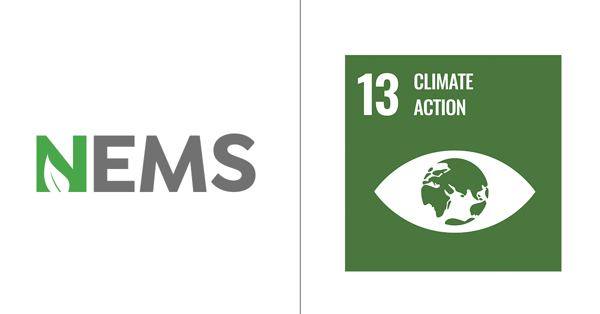
Now is the time for unity, the time for action
another NEMS iNsight
Each year we have hit new records related to our Carbon dioxide (CO2) emissions. Even worse our Methane (CH4) emissions have followed suit. In the first 20 years after emission CH4 is 80 times more potent than CO2. Our consumption of both food and goods has increased. We have never travelled as much, due to easy and affordable global airfare offerings. Air quality in many of the world’s largest cities has become so poor that people are becoming chronically sick. There has been an increase of extreme weather events the past 20 years. An increase of 75% compared to the previous 20-year period. Killing more than 1.2 million people and causing damages for nearly $3 trillion. If no action is taken the world will have more than 143 million climate migrants by 2050. People who are forced to move due to poor living conditions related to climate change.
Perhaps the greatest and most complex challenge of our time is the climate challenge.
Challenge accepted
This paints a bleak picture, and it might seem hopeless. These are some of the reasons why the UN created the UN Sustainable Development Goals back in 2015. Goal 13 – Climate Action specifically focuses on the challenges related to atmospheric pollution and preventing events caused by climate change.
The UNSDGS goals are intended to be achieved by 2030. The Paris accord, a multilateral agreement, aims to limit the temperature increase at well below 2C preferably 1.5C. The EU Climate target and others the world is aiming towards a carbon neutral EU by 2050. China has targeted 2060 together with Brazil. There are many similar initiatives that show that the world is moving into action.
 2020 a year that changed us all
2020 a year that changed us all
2020 was a very different year, not only due to COVID-19, but also it was a year that saw the reduction of atmospheric pollution from energy production, industry, air travel and other transport since the lockdown led to reduced mobility and demand. In many of the world’s major cities the air quality increased exponentially. This shows us that it is possible to reduce our atmospheric emissions. However, as lockdowns seized throughout the year, emissions where back on the rise.
One of the things that did change after 2020 was the way that businesses interact with each other. From using extensive air travel for meetings, companies have now embraced digital solutions such as Teams and Google Meet. Reducing the need for air travel and cutting unnecessary time spent on the move.
Enter Social Governance
New laws in the EU demands large EU companies within “public interest” need to report their environmental impact. This means that businesses listed on the stock exchange are now measured on their environmental performance via their ESG (Environmental, Social, Governance) numbers, directly impacting their valuation.
This is causing industries such as Oil & Gas to look closer at their activities. In Norway the industry has tackled these challenges by imposing environmental guidelines for emissions to air and discharge to sea. NEMS was involved in managing the process of creating the guidelines together with the Norwegian Oil & Gas industry. The Oil & Gas industry in Norway has since the introduction of these guidelines had a goal to continuously reduce their emissions. One of the key contributors in reducing GHG emissions has been to utilize power from shore on several installations. 40% of Norwegian offshore activity will be electrified by 2025. Norwegian on-shore electricity is all hydro and wind powered, meaning that the offshore industry can utilize renewable energy. Today Carbon Capture and Storage (CCS) projects are being implemented to handle emissions that cannot be reduced from the use of renewable energy sources. The initiatives have made Norway a leader in reducing the environmental footprint related to Oil & Gas activities. This has inspired other countries to take similar actions often looking to Norwegian guidelines as best practice on how to approach the emissions mitigation in Oil & Gas.
UNSDGS Goal 13 and NEMS
With the planned reduction of emissions and the increased focus on environmental KPIs, the need for clear and concise environmental data is more important than ever. This is where NEMS can be a part of UN goal 13. By enabling Oil & Gas companies and companies in other emissions intensive industries to get control and overview of their emissions. NEMS is assisting the industry to continuously improve and identify new opportunities to reduce their environmental footprint. NEMS environmental advisors are helping companies in identifying best practice in reporting and understanding their environmental numbers.
NEMS will be sharing our initiatives in how we will do our part in reducing our own environmental footprint in the months to come. Stay tuned!
To learn more about how we help our clients check out our solutions pages.
If you are looking for ESG reporting solution click here.
If it is environmental accounting you need click right here.
